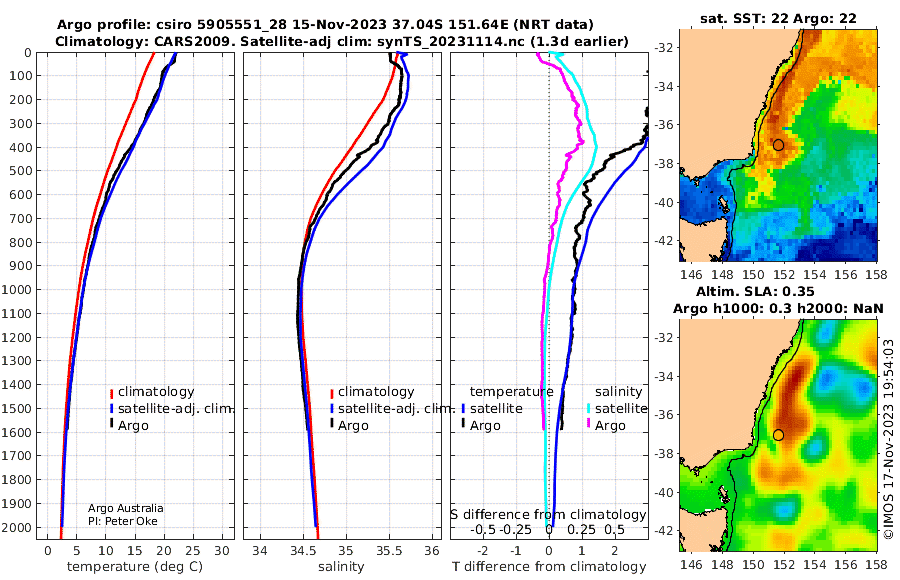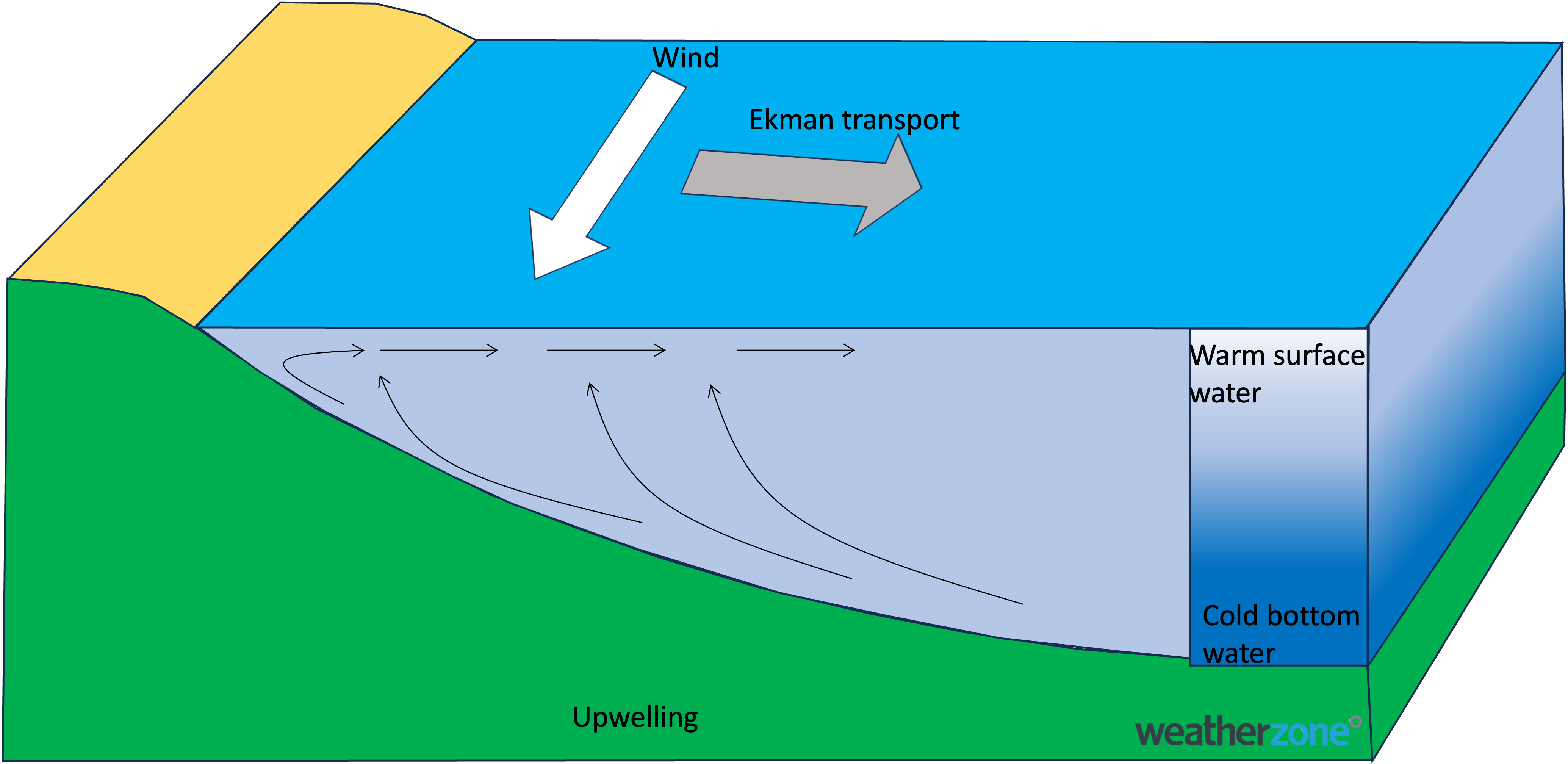Marine heatwave developing over the NSW coast
Balmy waters for this time of year have made for pleasant beachgoing conditions over much of the NSW coastline in recent weeks.
Sea surface temperatures will typically lag behind the trends in air temperature by about 2 months, meaning that springtime will generally feature quite chilly waters at the beach, even when the air temperature shoots up.
However, a deep, warm-cored eddy spinning off the NSW coast over the last month has provided warmer than average sea temperatures, both at the surface and deeper in the ocean. The Argo float profile below shows significantly warmer than average sea temperatures off the NSW coast extending deep into the ocean, to a depth of approximately 500m. Argo floats are devices that float up and down into the depths of the ocean, measuring the water temperature and salinity in doing so.

Figure 1: An ARGO float located off the NSW coast on November 15th measuring temperature and salinity between the sea surface and a depth of 2km. (IMOS)
While this pool of warm water at the surface is responsible for some of the warmer waters experienced at the beach this season, the deep extent of this warm water is responsible for the sustained trend of balmy waters experienced. Strong northerly winds are typical of springtime, and these drive upwelling (through the Coriolis force from the rotation of the Earth), bringing typically cold deep water up to the surface, leading to drops in sea surface temperatures close to the coast. With warm waters extending deep into the ocean due to this warm eddy, upwelling that does occur only brings up warm water, leading to much less significant drops in sea surface temperature readings.

Figure 2: Schematic diagram explaining upwelling under a persistent northerly wind.
Looking at the sea surface temperatures measured this morning, on Saturday November 18th, (Figure 3 below) all waverider buoys scattered across the NSW coastline were recording temperatures above 20°C. These buoys span from Eden on the far south coast, to Byron Bay in the Northern Rivers. A notable trend seen through the earlier period of this figure is that our more southerly buoys were actually measuring warmer sea surface temperatures than both the Coffs Harbour and Crowdy Head buoys on the Mid North Coast. This can be attributed to the warm-cored eddy transitioning south.

Figure 3: Sea surface temperature measurements over the NSW coastline over the past week. (Manly Hydraulics Laboratory)
These warm waters have made for pleasant beach-going conditions to go play in the surf, especially with recent waves of heat moving east across the continent. However, persistent warm waters across such a broad area of coastline, as expected with such an extensive and deep pool of warmth with the offshore eddy, is detrimental to the coastal sea life with warm water being nutrient-poor. Even with an El Niño event, which pools cooler waters to the northeast of Australia, the current forecast for summer calls for a continuation in above average sea surface temperatures, as seen in the figure below.

Figure 4: Forecast sea surface temperatures between December and February across the globe, with cooler waters around northern Australia under an El Niño and positive Indian Ocean Dipole not significantly cooling the Australian east coast. (Bureau of Meteorology)